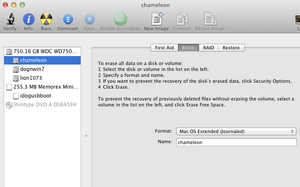
- #Mac goes straight to os x utilities serra locked hd install#
- #Mac goes straight to os x utilities serra locked hd full#
It is a perfect match for CD & DVD Software in the System Tools category. The latest version of Disk Utility is 18.0 on Mac Informer. If you don't want to mess with Terminal, Tim Perfitt of TwoCanoes software made a free Recovery Selector utility that'll do it for you.Įither way, restart, and it should start in Internet Recovery mode without any keys. For those of you familiar with the Repair Disk Permissions option that used to be located under Utilities > Disk Utility > First Aid in older. Apple has outfitted OS X with a bevy of built-in tools designed to make the Mac experience unique in the operation system space, but there are numerous third-party utilities that can enhance your. You can do this by hand in the Terminal utility, with the command: sudo usr/sbin/nvram internet-recovery-mode=RecoveryModeNetworkĮnter your admin password when prompted (it won't echo). (Normally, you could hold Option at startup, and then select it but having Shift stuck down seems to prevent this.) Option 2: Select recovery mode with an NVRAM setting When that's finished, select that drive in System Preferences -> Startup Disk, and restart. In summary, download the macOS installer application from the Mac App Store, plug in a flash drive that can be erased (because it will be), and run something like: sudo /Applications/Install\ macOS\ Big\ Sur.app/Contents/Resources/createinstallmedia -volume /Volumes/MyVolumeĮnter your admin password when prompted (it won't echo), and follow the prompts.
#Mac goes straight to os x utilities serra locked hd full#
See Apple Support Document HT201372: "How to create a bootable installer for macOS" for full instructions.
#Mac goes straight to os x utilities serra locked hd install#
After rebooting and configuring your system download and install macOS Sierra. This will put you on the OS X version that came from the factory. Install macOS ( the macOS that came with your Mac, or the version closest to it that is still available will be installed ). Now quit Disk Utility and click reinstall OS X at the top and wait for it to finish and restart.



So I recommend at least starting the first option. Boot to Internet Recovery Mode ( shift alt cmd R) Open Disk Utility and erase your internal disk. The second option is probably simplest (if nothing goes wrong), but if it doesn't work, having an installer drive (first option) will give you a lot more options.


 0 kommentar(er)
0 kommentar(er)
